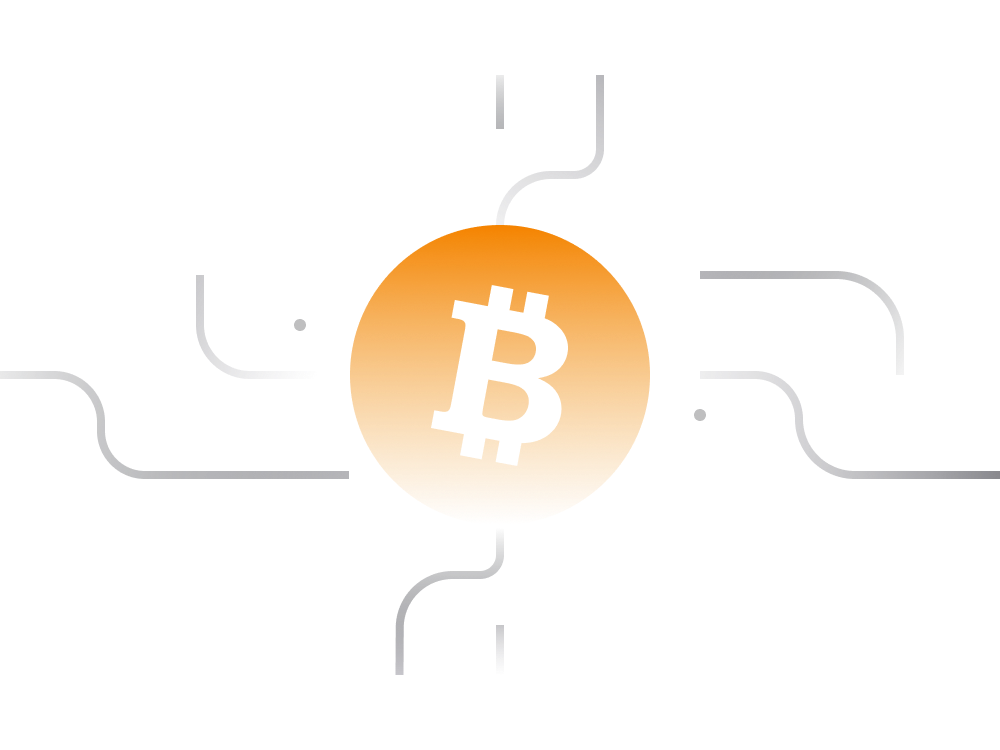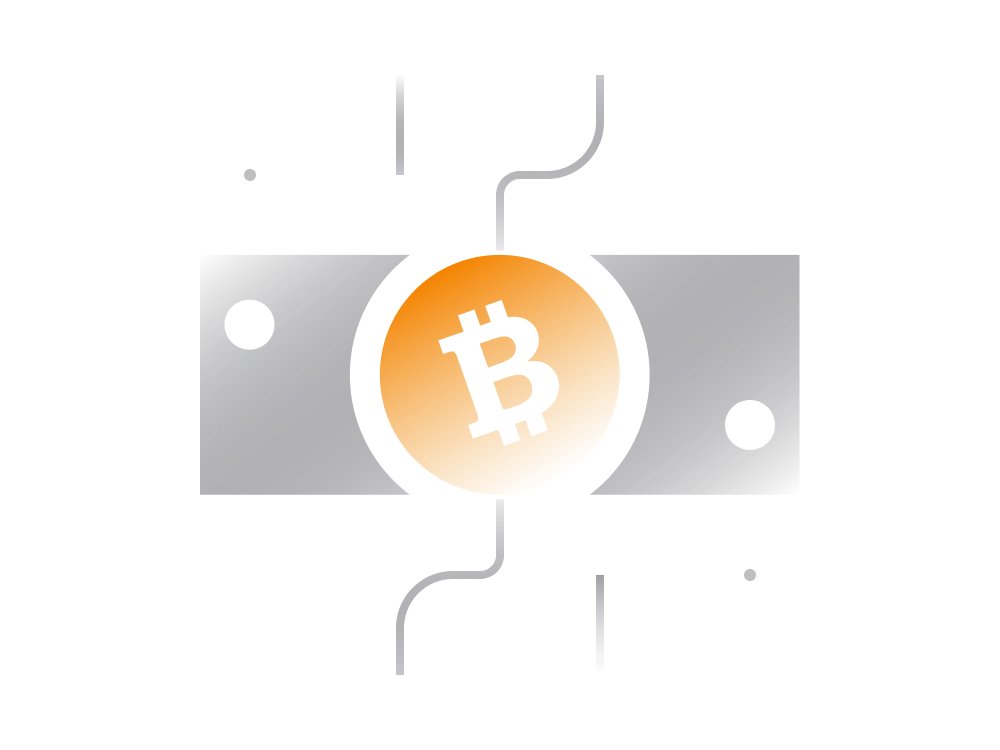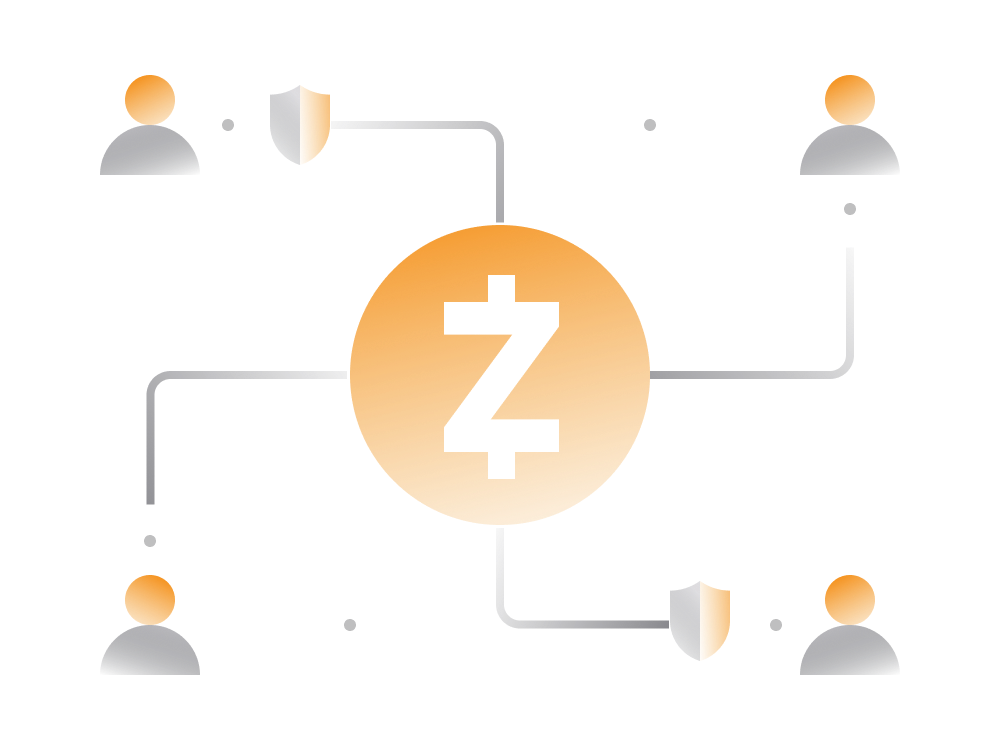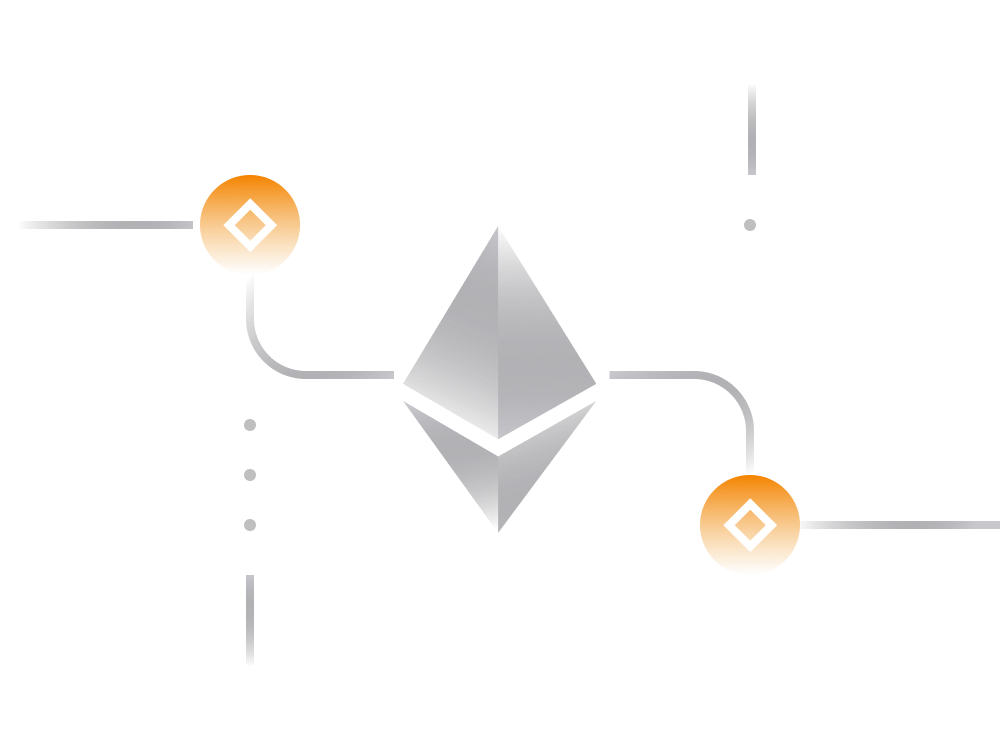
Ethereum in Simple Terms
Ethereum is regularly mentioned alongside Bitcoin as one of the most popular decentralized cryptocurrencies.
Ethereum was first proposed in 2013 but came to prominence in 2015, some six years after Bitcoin. The Ethereum platform was developed by Vitalik Buterin, along with several other contributors and co-founders.
Many wonder what makes Ethereum different from Bitcoin and why there is so much hype around it. Ethereum proposed a different approach to cryptocurrency and blockchain, in comparison to existing blockchain projects like Bitcoin.
Bitcoin blockchain enables value transfers where value is denominated in Bitcoin (denoted by BTC). Anyone in the world can connect to Bitcoin network and send receive Bitcoins without intermediaries.
Ethereum on the other hand is the platform for decentralized services. It can be used to build public services which are always online, unblockable and operate exactly as advertised without any means to cheat.
Think of Ethereum as a global computer that's open to everyone to participate in.
1. Why Ethereum
Someone may think what's the big deal? The regular web is full of all kinds of services, websites and applications.
What makes Ethereum attractive is the fact that it's open and trustless:
-
Anyone without the need for permission can use the Ethereum platform to host a decentralized service. It can be an online store, a crowdfunding campaign, a game etc.
-
The services running on Ethereum are permanent and accessible to anyone anywhere in the world. For as long there is at least one Ethereum network server (also known as node) the service will remain operational and accessible to the public. The page here shows the number of nodes online at any give moment.
-
The services operating on Ethereum are transparent. Anyone can lookup any service and verify that it works as expected as well as the full history of everything that took place on it.
-
Keeping in mind that anyone can operate an Ethereum node, censoring such a network is extremely difficult. Blocking a service running on Ethereum is considerably more difficult than blocking a website.
So, Ethereum platform is well suited for any type of service where reliability and transparency is critical.
For example, a lottery or voting app built on Ethereum cannot cheat. These apps are transparent and work exactly as programmed. Anyone with sufficient technical knowledge can check the logic powering these services and confirm there are no workarounds or vulnerabilities.
Conversely, with a regular lottery or voting apps, there is no way of checking the code. You have to place your trust in the developer of the service or some regulatory body.
2. Ethereum Blockchain
Under the hood, Ethereum is a blockchain. If you are new to this concept then read our short guide to blockchains.
The Ethereum blockchain is basically a history of all actions (aka transactions) that ever happened on Ethereum, starting from the very beginning.
A transaction can range from a simple transfer of Ether tokens from one wallet to another, to more complex processes such as the execution of an action on some decentralized service (aka, smart contract---more on these in a moment!).
Every transaction made on the Ethereum, reaches all Ethereum nodes within a few seconds. There is a consensus algorithm in place that ensures that all nodes on the network end up with the same copy of the blockchain.
Each Ethereum node has a live copy of the Ethereum blockchain. All nodes talk to each other. If one is down the others are there to keep the system running.
As the case with all open blockchains, the Ethereum network nodes ensure availability 24/7 and censorship-resistance. Anyone can unconditionally operate an Ethereum node. The more nodes there are online the more secure Ethereum blockchain is.
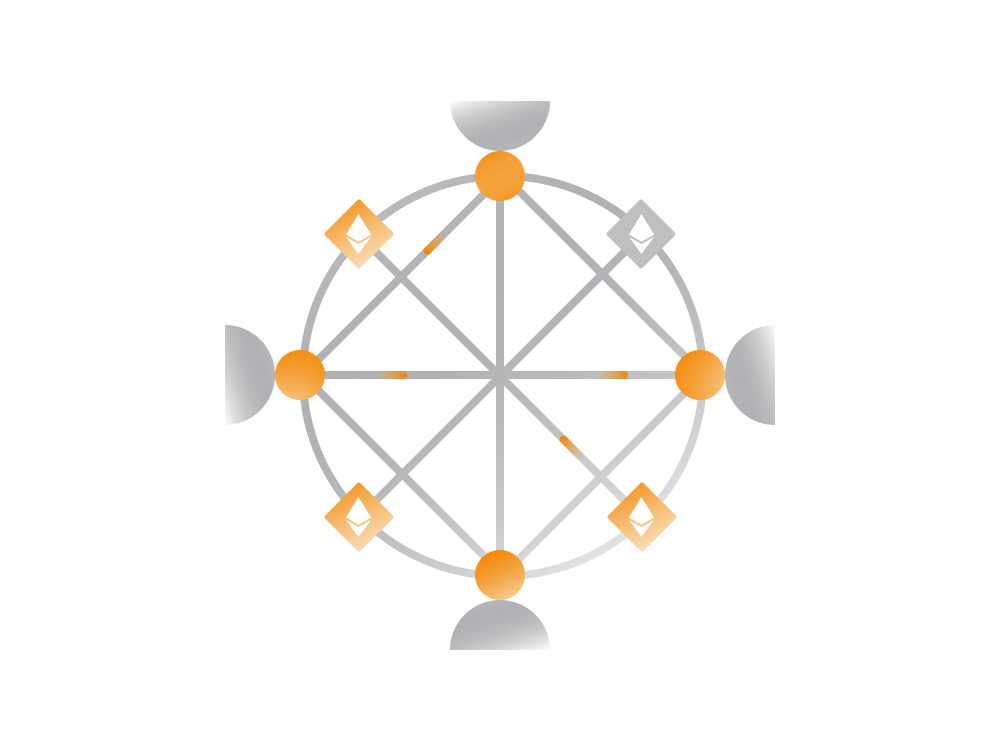
Every node individually validates every transaction, ensuring only legitimate transactions enter the blockchain. A node cannot cheat the rest of the network.
- As long as at least one node is online, the Ethereum network will remain accessible for transactions.
- The more nodes there are on the network, the harder it is for an entity to cheat or for someone to censor access to the network.
Cumulatively, Ethereum nodes guarantee the openness, availability, decentralization, and security of the Ethereum network.
3. Ether Currency
Just like Bitcoin blockchain, Ethereum blockchain has it own native cryptocurrency known as Ether, denoted by symbol ETH.
Usually people refer to Ether cryptocurrency as Ethereum. A unit of Ether consists of smaller units knows as wei.
1 ETH = 1000,000,000,000,000,000 wei
Ether is required in a form of fees for doing anything on Ethereum blockchain. That's where Ether gets the value from, and the reason it has been increasing in value over the years.
Users pay small transaction fees to the Ethereum network nodes when:
- transferring Ether
- transferring Ethereum-based tokens
- interacting with decentralized services
All fees originating from Ethereum transactions go to Ethereum network nodes. Anyone can operate an Ethereum network node from home.
Unlike Bitcoin the number of Ethers in circulation are not capped. For example, once the total number of Bitcoins reaches 21 million, no more Bitcoin will be created. Whereas, there is no such upper limit to the total Ether token supply.
The emission of new Ether currency is encoded into the code powering Ethereum blockchain. It is there to encourage people to run Ethereum nodes.
The supply of new Ether is limited to 18 million tokens per year, although that limit has never been reached. The supply of new Ether has averaged just under 9 million per year since 2015.
4. Ethereum Is A Network
The terms Ethereum network, Ethereum blockchain, Ethereum platform often used as a reference to the network of servers that run Ethereum node software.
The Ethereum network consists of all servers worldwide running Ethereum node software. Usually, when talking about Ethereum people focus on Ether cryptocurrency rather than the network it has and potential applications.
Anyone can join the Ethereum network and start using it on equal terms as everyone else.
The Ethereum is not just cryptocurrency. Ethereum is a network, and an open decentralized platform for financial and other type of services where trust, transparency and reliability is crucial.
In that sense, Ethereum has significantly more applications than say Bitcoin blockchain which is currently limited to serve only those looking at Bitcoin as a store of value.
Ethereum has attracted a lot of engineers and entrepreneurs interested in potential services that can be built on Ethereum rather than Ether currency itself.
Over the last few years, Ethereum managed to attract over a million engineers worldwide. Most of those are currently building autonomous services that control significant amount of funds.
The large size of the Ethereum network is what attracts most engineers specifically to Ethereum and not competing projects like say EOS blockchain. The Bitcoin blockchain is the only blockchain that potentially has an even larger network.
The services built on top of Ethereum ultimately attract even more to Ethereum pushing the ecosystem further.
5. Smart Contracts
A smart contract is a piece of code that works on a blockchain to enforce the terms of a contractual agreement. In the simplest of terms, a smart contract is an example of a "when X takes place, do Y" scenario.

Every application or service residing on Ethereum or alike blockchain essentially consists of smart contracts.
If someone decides to build a lottery on Ethereum it would be basically a set of smart contracts interacting with each other.
To give you a better idea, it may be something as follows:
-
An engineer can program a smart contract that holds a balance of X Ether, and programmed to pay out its entire balance when someone provides the correct solution to some puzzle.
-
When a user submits the correct answer, the smart contract executes its code and pays out the full balance to the user's Ethereum wallet address.
-
That contract may also require for participants to pay an entry fee to the contract (which will also be sent to the winner) to be able to participate in the challenge.
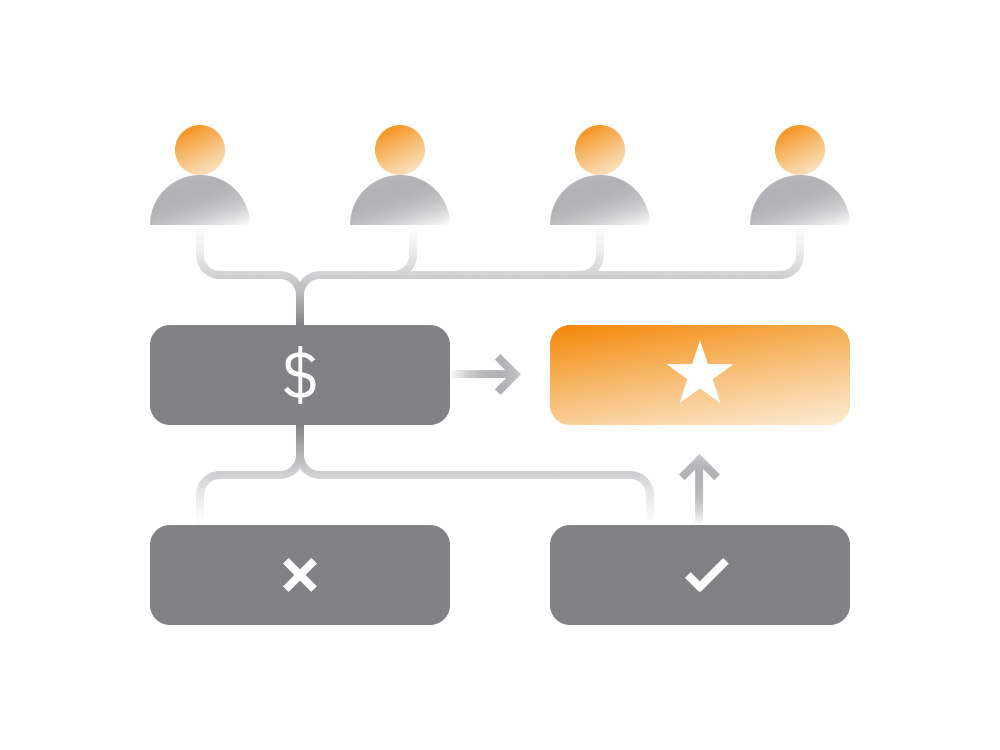
The development and use of smart contracts are one of the fundamental properties that differentiates Ethereum from other blockchains. It’s what makes it possible to build services on Ethereum that can go far beyond the mere transfer of currency tokens from one address to another.
The major difference between a regular physical paper contract and a smart contract is enforcement.
Where a regular contract outlines the terms of the agreement, a smart contract takes that one step further and enforces the terms of the agreement automatically on the blockchain, once the smart contract criteria are met.
Anyone with sufficient knowledge can write up a smart contract and add it to Ethereum blockchain. Once written and signed off by the vested parties, the smart contract is broadcast to the Ethereum network and stored there permanently.
Anyone can lookup the address of the contract on the Ethereum blockchain and see what it can and can't do.
Smart contracts can hold large balances and operate their funds independently, fully managed by the underlying code powering the contract.
6. Decentralized Applications
Decentralized Applications (aka DApps) are services built with the help of smart contracts. Smart contracts hold the rules according to which the DApp operates. A single DApp may consist of one or more interconnected smart contracts.
Although it may sound complicated, there is an easy way to consider how DApps operate.
A regular website or mobile app is centralized, using a centralized server where a single entity or organization controls everything to do with the service.
The website or app could disappear at any time without warning, or the service users could experience censorship, outages and sudden changes.
Whereas, a decentralized app (DApp) uses a distributed structure to protect against those issues. Once the DApp published on the blockchain, and the service goes live, no single entity can make sweeping changes.
Not even the author of the DApp can censor users from interacting with it unless the author deliberately adds means to do so. When such means are in place people can easily spot them as well.
At this point in time, there are thousands of DApps residing on Ethereum blockchain. Usually, DApps have some kind of token (unit of something) coded into its business logic as a means of measuring something in the service the DApp aims to provide.
For instance, in a smart contract that is built for organization management a token can be used to grant members voting power or allocate profit share.
Tokens belonging to popular DApps are usually tradable on public cryptocurrency exchanges. In that regard, these tokens are just like stocks that can rise and fall in value depending on the nature of the DApps, and the market demand for it.
Most of the DApps built on Ethereum are financial services and often referred to as Decentralized Finance services.
Listed below are some real Ethereum DApps which managed to grow substantially and currently valued in the range of hundreds of millions USD.
MakerDAO
MakerDAO is a decentralized autonomous organization that functions entirely on Ethereum blockchain. With about half a billion USD under its control MakerDAO is an ideal example for a type of financial service which can be built on Ethereum.
It is governed and owned by those in possession of special MKR token which can be purchased from someone on cryptocurrency exchange.
MakerDAO is a lending facility that gives out cryptocurrency loans in exchange for a fee. The fee for each loans have to be paid in MKR tokens driving the value for MKR token holders.
The DAI stablecoin, pegged 1:1 to the US dollar, is the currency of the loans given by MakerDAO. Anyone can take out a DAI denominated loan from the MakerDAO smart contract.
Uniswap
There are many tokens belonging to all kinds of DApps on Ethereum blockchain. Just like the MakerDAO's MKR token, many of those tokens represent value and are traded on cryptocurrency exchanges.
Uniswap is a set of smart contracts on Ethereum which enables users to exchange Ethereum-based tokens without traditional intermediary body.
Exchange Tokens
Several multi-billion dollar cryptocurrency exchanges launched an Ethereum-based token to compliment services offered by an exchange.
Among other things, holders of these tokens pay vastly reduced exchange fees. Binance Coin (BNB) and Huobi Token (HT) are good examples of such tokens.
Having those tokens on a blockchain adds transparency to the issuance as well as provides means for the exchanges to raise funds and incentivize user activity.
Stablecoins
There are a number of smart contracts on Ethereum representing stablecoins.
These are cryptocurrency tokens that pegged to the value of something (usually USD) and generally 1 to 1 backed by liquid reserves. The biggest such stablecoin is Tether (USDT).
Tether often used by cryptocurrency users for quick swapping their holdings to USD equivalent at a 1:1 ratio. USDC is another such stablecoin run by a different organization.
Both organizations utilize Ethereum blockchain to manage a public token representing value.
7. DApps Ecosystem
The versatility of the Ethereum blockchain and its native programming language, Solidity, attracts a lot of engineers, entrepreneurs and investors into the ecosystem.
Engineers worldwide are currently building user facing smartphone apps or websites for various DApps residing on Ethereum blockchain. There is a lot of engineering activity in that sector now.
These days Ethereum-based financial DApps cumulatively handle over 1 billion USD in value.
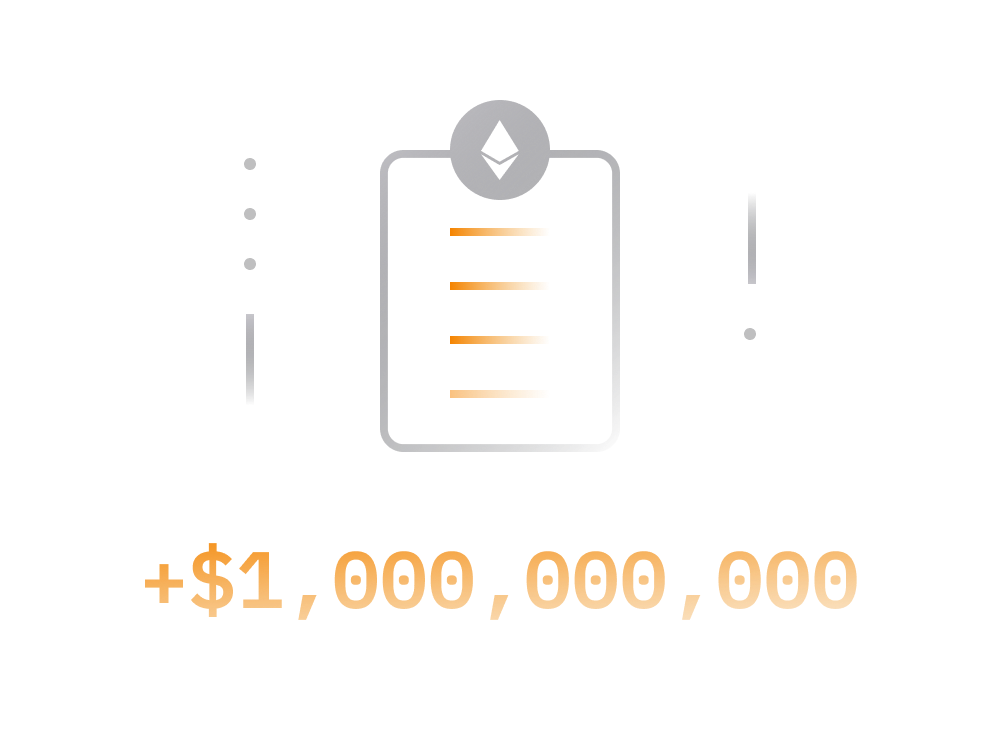
Accessing, understanding and interacting with these DApps on a comfortable level is still a bit problematic for someone not familiar with blockchain and related technology.
8. Ethereum Problems
Just like Bitcoin, Ethereum has its own challenges. There are issues that can inhibit its future growth.
-
Slow
The underlying blockchain powering Ethereum can't currently process more than a few million transactions per day. There is a great deal of active work being done worldwide trying to scale the Ethereum blockchain.
-
Complicated
Ethereum is complicated to grasp, especially for newcomers. A lot of people find it difficult to grasp the application of Ethereum blockchain beyond the payment transfers. The services built on Ethereum are generally hard to use.
-
Lack of privacy
Ethereum is not private. If you send someone Ether or any other Ethereum-based token then the recipient can potentially see your balance and transaction history on Ethereum.
9. Ethereum Privacy
As mentioned above, Ethereum is not private at all. Ethereum blockchain is fully transparent allowing anyone to see all incoming/outgoing transactions for the given payment address.
People you've transacted with can see your balances and full history of activity.
In the case of Bitcoin blockchain the address for receiving payments can change (but don’t have to) with each transaction. Most Bitcoin wallets generate a new address after each incoming payment making it considerably more difficult to connect two different transactions to a single party.
When it comes to Ethereum blockchain your address to receive Ether payments will always be the same. That address becomes your ID when you interact with smart contracts on Ethereum blockchain. Nearly all Ethereum wallets work this way nowadays. Therefore, there is a privacy issue.
This is likely to change, but for the time being most wallets use a single Ethereum address. The balance and transactions belonging to any payment address are openly available for anyone on Ethereum blockchain.
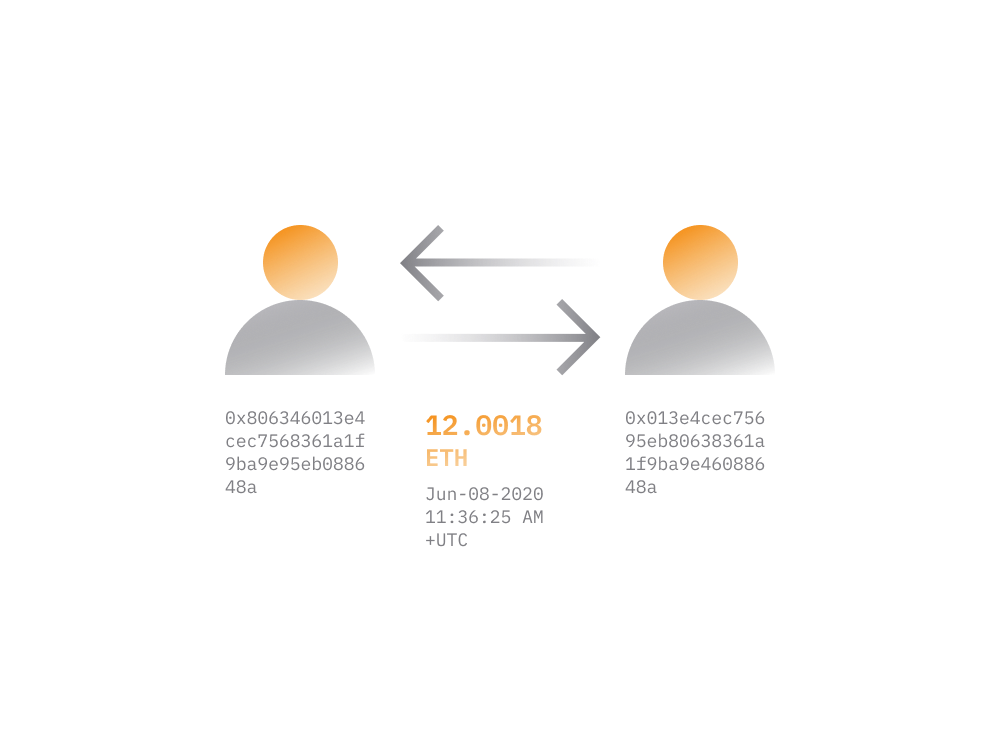
So, when you transact with Ether, keep in mind that the other party can look up your balance as well as history of incoming/outgoing payments to/from that address.
The only thing that adds some minimal privacy element into the mix is the fact there is no way to check who that address belongs to. However, with enough time and resources, someone could feasibly link certain transactions to individual users.
If one of the cryptocurrency exchanges gets hacked and hackers get their hands on user data, this would mean someone can map Ethereum payment addresses to real world identities.
